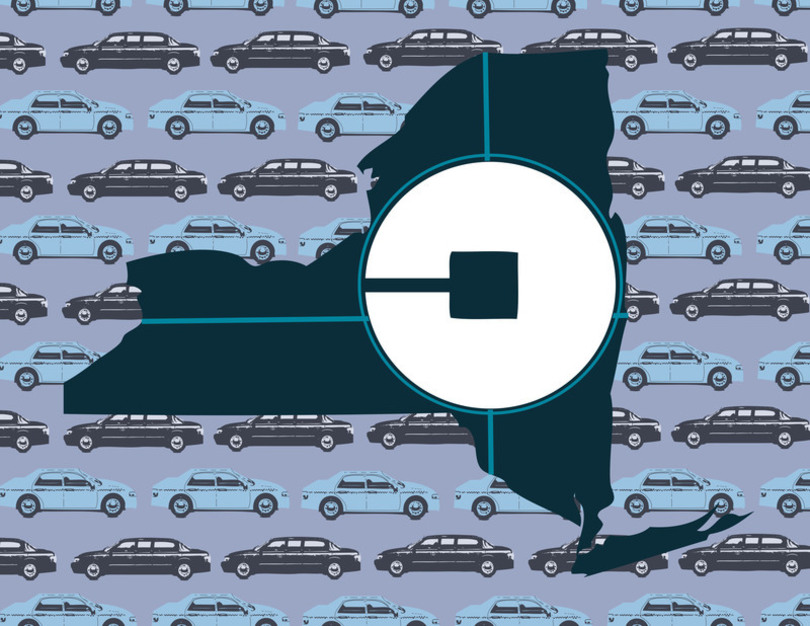Uber’s legalization in New York state was years in the making

The Senate, Assembly and Cuomo announce an agreement on the 2018 fiscal year budget that includes a measure to authorize ride-hailing services to operate in the state. Emmy Gnat | Head Illustrator
New York state lawmakers have authorized ride-hailing services such as Uber to operate in the state as part of the 2018 fiscal year budget, which was approved on Friday.
Ride-hailing services will be authorized to operate statewide in about three months. The services have previously been illegal in the state, except for in New York City.
Efforts to bring Uber to Syracuse and elsewhere in the state has lasted multiple years. Here’s a look at how the state arrived at its current point.
March 2015
The New York state Assembly introduces bill A.6090, which sought to change the state insurance law to allow for ride-hailing to operate statewide.
That particular bill never passed through the state Legislature, but it helped spearhead the discussion about legalizing ride-hailing services in the state.
September 2015
Then-Student Association President Aysha Seedat tells The Daily Orange she planned to push for the legislation of ride-hailing services in New York state.
Seedat’s continued support for ride-hailing services was one of Syracuse University’s lone ties to the push for Uber and Lyft, as the university never publicly said whether it supported the legalization of the services.
November 2015
The Student Association assembly approves sending a letter to the New York State Assembly arguing for the legalization of ride-hailing services in the state.
Seedat and then-Parliamentarian James Franco wrote the letter with the help of student governments at other schools in New York state.
February 2016
Syracuse Mayor Stephanie Miner expresses her support for Uber and Lyft in a statement to The Daily Orange.
In the statement, Miner highlighted safety as one of the main benefits of ride-hailing services.
“Whether it’s the grandmother who needs help getting to a doctor’s appointment, the workers who need a reliable and affordable way to get to their job, or the college students (that need) a safe ride home after a night out with friends, Uber has a lot to offer our great city,” she said at the time.
June 2016
The state Assembly and Senate fail to agree on a bill that would have allowed ride-hailing services to operate. The two bodies could not agree over the minimum insurance requirements for the service, and the Assembly bill stalled.
January 2017
New York state Gov. Andrew Cuomo presents a proposal to legalize ride-hailing as part of his 2017 State of the State address.
Cuomo proposed a requirement for drivers to get insurance coverage that is double the current auto insurance limits in upstate New York and have at least $1 million dollars of coverage when going to pick up or transport a passenger.
February 2017
The state Senate votes to approve a bill that would enable the legalization of Uber and Lyft in the state, leaving the Assembly as the only body that hadn’t made a proposal in the legislative session.
March 2017
The Assembly introduces its own bill to legalize ride-hailing services. Assemblyman Kevin Cahill (D), who introduced the bill, said at the time that the primary distinction between that bill, the Senate’s bill and Cuomo’s proposal was that the Assembly’s bill gave more control to local governments in regulating the services.
April 2017
The Senate, Assembly and Cuomo announce an agreement on the 2018 fiscal year budget that includes a measure to authorize ride-hailing services to operate in the state.
Under the agreement between lawmakers and Cuomo, the state as a whole will have more responsibility than local municipalities in regulating ride-hailing services. The state’s Department of Motor Vehicles will oversee companies such as Uber and Lyft to make sure they follow laws and regulations.
The agreement creates minimum safety standards for the services, such as mandatory background checks, and mandates that companies have a $1.25 million minimum insurance level while a passenger is using the service.




